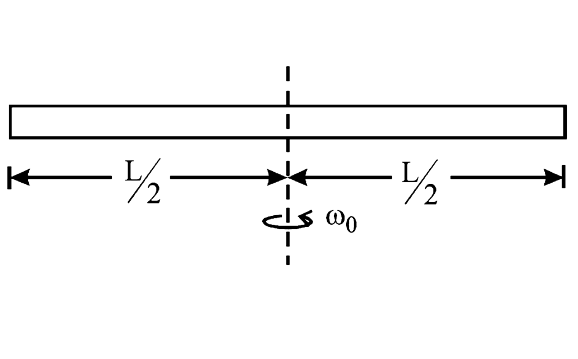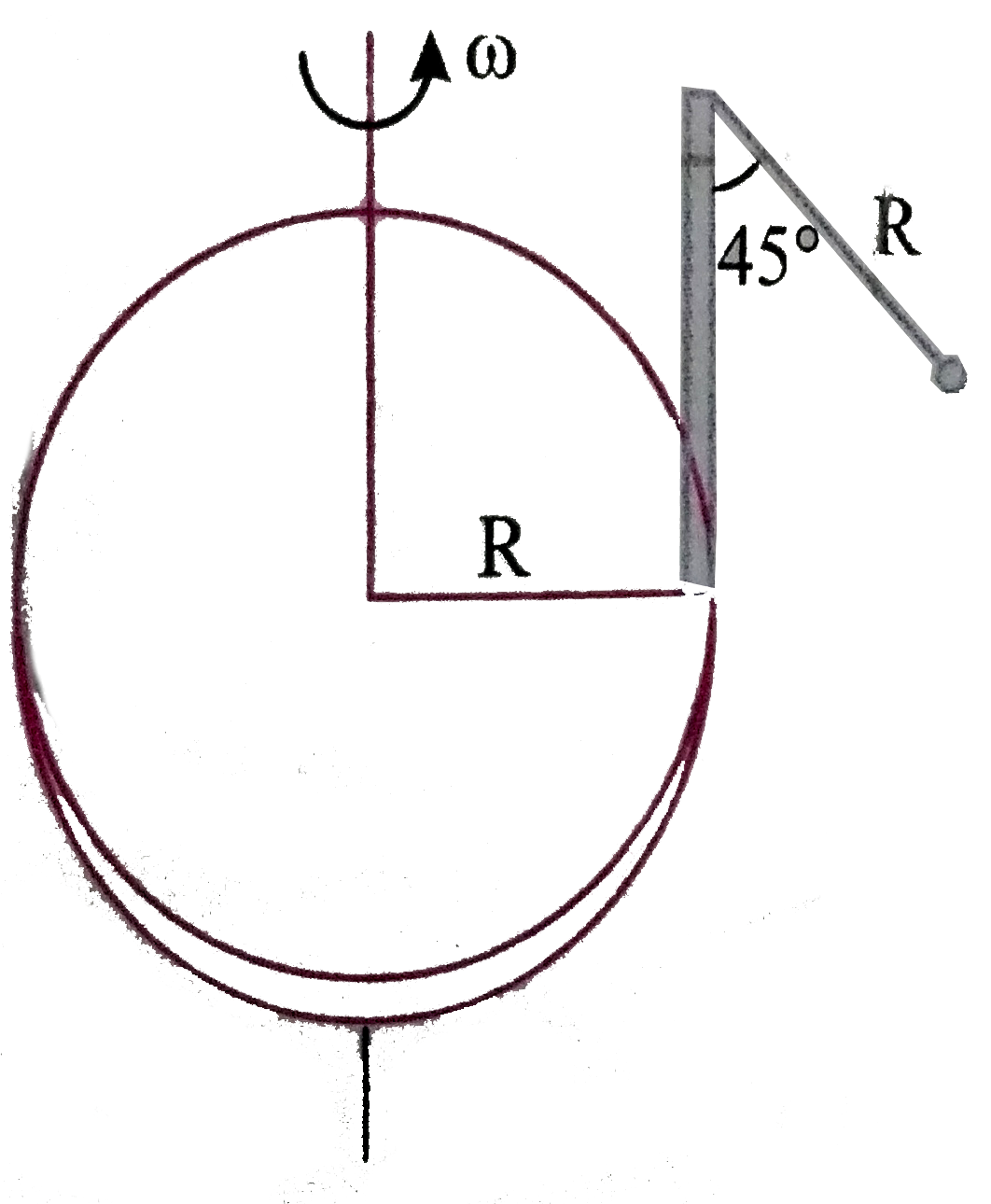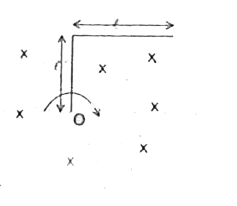One end of a rod of length L is fixed to a point on the circumference of a wheel of radius R. The other end is sliding freely along a straight channel passing through the centre O of the wheel as shown in the figure below. The wheel is rotating with a constant angular velocity ω about O. Taking T=2πω the motion of the rod is

simple harmonic with a period of T
simple harmonic with a period of T/2
not simple harmonic but periodic with a period of T
not simple harmonic but periodic with a period of T/2
The correct Answer is:C
Step by step video, text & image solution for One end of a rod of length L is fixed to a point on the circumference of a wheel of radius R. The other end is sliding freely along a straight channel passing through the centre O of the wheel as shown in the figure below. The wheel is rotating with a constant angular velocity omega about O. Taking T = (2pi)/(omega) the motion of the rod is by Physics experts to help you in doubts & scoring excellent marks in Class 12 exams.
Topper's Solved these Questions
Similar Questions
A smooth uniform rod of length L and mass M has two identical beads of negligible size each of mass m which can slide freely along the rod. Initially the two beada are at the centre of the rod and the system is rotating with an angular velocity ω0 about an axis perpenducular to the rod and passing through the midpoint of the rod. There are no external forces. When the beads reach the ends of the rod, the angular velocity of the system is ......
 View Solution
View Solution
The kinetic energy of a uniform rod of mass m rotating with constant angular velocit ω about one of its end which is fixed as shown in figure is mω2l2N find NView Solution
Knowledge Check
- Question 1 - Select One
One end of a rod of length L=1 m is fixed to a point on the circumference of a wheel of radius R=1/√3 m. The other end is sliding freely along a straight channel passing through the center O of the wheel as shown in the figure below. The wheel is rotating with a constant angular velocity ω about O.

The speed of the sliding end P when θ=60∘ isA2ω3Bω3C2ω√3Dω√3 - Question 2 - Select One
A conducting wheel in which there are four rods of lengthe l as shown in figure is rotating with angular velocity ω in a uniform magnetic field B. The induced potential difference between its centre and rim will be
 A2Bωl2B√Bl2ωCBlω2DBl2ω2
A2Bωl2B√Bl2ωCBlω2DBl2ω2 - Question 3 - Select One
A smooth uniform rod of length L and mass M has two identical beads of negligible size each of mass m which can slide freely along the rod. Initially the two beads are at the centre of the rod and the system is rotating with an angular velocity ω0 about an axis perpendicular to the rod and passing through the midpoint of the rod. There are no external forces. When the beads reach the ends of the rod, the angular velocity of the system is ......
 Aω0BMω0M+12mCMω0M+2mDMω0M+6m
Aω0BMω0M+12mCMω0M+2mDMω0M+6m
A disc of radius R has a light pole fixed perpendicular to the disc at its periphery whish in turn has a pendulum of legth R attached to its other end as shown in figure. The disc is rotated with a constant angular velocity ω The string is making an angle 45∘ with the rod. Then the angular velocity ω of disc is
 View Solution
View SolutionA cord is wound round the circumference of wheel of radius r. The axis of the wheel is horizontal and fixed and moment of inertia about it is I. A weight mg is attached to the end of the cord and falls from rest. After falling through a distance h, the angular velocity of the wheel will be.
View SolutionFor the L shaped conductor in a uniform magnetic field B shown in figure the emf across its ends when it rotates with angular velocity ω about an axis through one its ends O and normal to its plane will be
 View Solution
View SolutionA copper rod of length l is rotated about one end perpendicular to the uniform magnetic field B with constant angular velocity ω . The induced e.m.f. between its two ends is
View SolutionA cord is wound round the circumference of wheel of radius r. The axis of the wheel is horizontal and fixed and moment of inertia about it is I. A weight mg is attached to the end of the cord and falls from rest. After falling through a distance h, the angular velocity of the wheel will be.
View Solution
